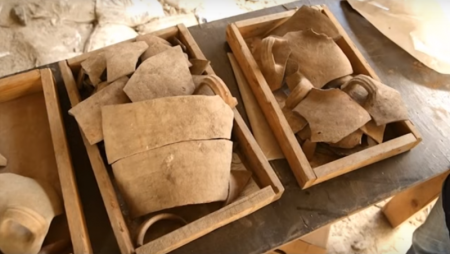New Archaeological Find Confirms Biblical Account of the Babylonian Conquest of Jerusalem

A newly discovered archaeological find confirms the Old Testament's account of the taking of Jerusalem by the Babylonian Empire in the sixth century BC.
Excavations conducted by the Israel Antiquities Authority at the Jerusalem Walls National Park, as funded by the City of David Foundation, discovered strong evidence of fire damage from around the time when the city was conquered by the Babylonians.
The IAA explained in a YouTube video from late July that various findings recently unearthed included "charred wood, grape seeds, pottery, fish scales and bones, and unique, rare artifacts."
"These findings depict the affluence and character of Jerusalem, capital of the Judean Kingdom, and are mesmerizing proof of the city's demise at the hands of the Babylonians," explained the YouTube video.
"Among the excavation's salient findings were dozens of storage jars which served to store both grain and liquids, several of which had stamped handles. Several of the seals discovered depict a rosette — a petalled rose."
IAA excavation directors Ortal Chalaf and Dr. Joe Uziel noted that this seal was typical for the end of the First Temple Period and were used by Judean royal administrators.
The findings came just before the national commemoration of the anniversary of the Babylonian conquest of Jerusalem, which was observed on Tuesday.
"At the dig site, the rampant destruction caused by a fiery inferno is clearly seen. Burnt charcoal layers of destruction preserved flooring and utensils in situ, giving a stark picture of the immediacy of the blaze," reported the Times of Israel.
"This is not the first time that remains of the Babylonian First Temple destruction were found in the City of David. What is interesting in the current dig, located beyond what is commonly thought of as Jerusalem's city limits during the First Temple, is that not all the excavated buildings of this period show the intense destruction layer."
A significant historical event for both Jews and Christians, the Babylonian captivity began around 586 BC when King Nebuchadnezzar conquered the city of Jerusalem.
"The exile formally ended in 538 bce, when the Persian conqueror of Babylonia, Cyrus the Great, gave the Jews permission to return to Palestine," noted Britannica.com.
"Historians agree that several deportations took place (each the result of uprisings in Palestine), that not all Jews were forced to leave their homeland, that returning Jews left Babylonia at various times, and that some Jews chose to remain in Babylonia—thus constituting the first of numerous Jewish communities living permanently in the Diaspora."





















